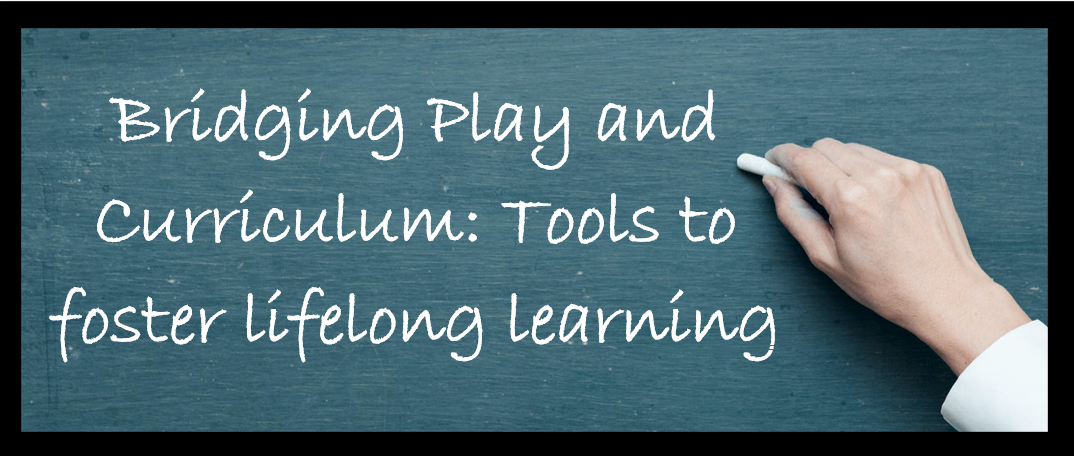Bridging Play and Curriculum
By Jessica Predy, BA Theraputic Recreation Therapy
Have you ever heard a child say, “Why do I need to learn this? I am never going to need it in real life.” Even I have uttered these words once upon a time. We know now that people are more willing to learn about things that matter to them (Renninger & Hidi, 2016). When we understand why something benefits us, provides a service to us in some way, or is intrinsically rewarding, we are more motivated to do it. Additionally, when our values and motivations are personally identified (vs. being suggested to us by someone else), change can be more powerful and sustainable (Vansteenkiste et al., 2018). So, what can we do to bridge the gap between education required and learning that feels valuable on an individual level? Here are some suggestions to foster enjoyable engagement and create a positive environment that promotes lifelong learning.
1. Seek to understand.
Sometimes, not understanding why certain material is relevant, can make it uninteresting or seem less valuable to someone. In health-related fields, we take great care in understanding our clients so that interventions we provide align with who people are as individuals; therefore, increasing the likelihood of success. Understanding what interests our kids when it comes to learning [as well as what doesn’t, and why], is pertinent to their success.
Try interviewing each other. Better yet, let them interview you first! Let them know the purpose of the interview is- To understand each other better so you can focus and build on strengths to navigate challenges and make more tedious tasks more enjoyable. Use open ended questions (those that require more than a yes or no answer) which provide an opportunity for them to control the direction of the discussion.
Some interview examples might be:
What are some things you are good at?
How do you feel when you do things you enjoy?
What do you like about_________(interest)?
What is the hardest part about_____(challenge)?
2. Find ways to connect material meaningfully.
You already know that you’re not going to run out and learn applied physics if it’s not pertinent you your happiness or survival. We are all busy, and unless it adds value to our life, we likely are not going to put effort towards it. Believe it or not, kids likely feel the same! Try and find ways that link learning material to things that your child finds valuable. Children may have trouble finding connections between areas of life, including learning material and its potential impacts on day-to-day activity; finding links and help them to understand “why” can help them to see the value in what they are learning (Egbert & Roe, 2014).
This is the perfect time to draw on the interview you completed together to tie interests and things that motivate them to areas of learning. Ex. Your child is challenged with learning fractions and feels it is a pointless task. Try making a connection to things which are relevant to them. Use current interests or goals they shared for their future: maybe they want to work at an ice cream store when they are older. The need to understand basic fractions is vital to that job and in daily functions. Using different mediums, like drawing or toys are great, but the best option is to bring the learning right into their suggested interest- like scooping ice cream! Bridging playful interests and positive emotions with learning can stimulate reward centers in the brain which play a central role in processes such as memory and motivation (Li et al., 2020).
3. Balance challenges AND strengths with praise.
Reinforcement has been shown to impact motivation and self-efficacy of learners (Moè et al., 2018). Try praising not only good behaviors and goals achieved, but efforts to as well. We often learn from mistakes, so accepting those experiences as opportunities for growth and acknowledging small changes (not just home runs) can play a role in maintaining learning motivation.
4. Be authentic.
We do need to talk the talk AND walk the walk. However, being yourself is important in building quality relationships and can help your child to feel safe in their learning exploits. Sharing personal experiences can build bonds and lets them know you understand; in turn they are more likely to come to you when they need guidance.
5. Remember that evolution is inevitable.
Things change. Interests change. Checking in periodically to reevaluate is important. Learning to be reflective is also an impactful tool we can use for years to come.
Working in these approaches can be a great way to foster a love of learning. It can also help us as adults to take an inventory of our own experiences, skills, and interests; helping to develop our own life-long learning journeys and become more authentic when empowering future generations. Overall, by reflecting on who we are as individuals and combining those interests with our strengths, we not only make difficult tasks seem more achievable but find greater value through those challenging experiences- building resilience in the process.
Never stop learning
because
life never stops teaching.
-Emily Vara
References:
Vansteenkiste, M., Aelterman, N., De Muynck, G., Haerens, L., Patall, E., & Reeve, J. (2018). Fostering personal meaning and self-relevance: A self-determination theory perspective on internalization. The Journal of Experimental Education, 86(1), 30-49. https://doi.org/10.1080/00220973.2017.1381067
Egbert, J., & Roe, M. F. (2014). The power of why: Connecting curriculum to students' lives. Childhood Education, 90(4), 251-258. https://doi.org/10.1080/00094056.2014.933665
Li, L., Gow, A. D. I., & Zhou, J. (2020). The role of positive emotions in education: A neuroscience perspective. Mind, Brain, and Education, 14(3), 220-234. https://doi.org/10.1111/mbe.12244
Moè, A., Katz, I., & Alesi, M. (2018). Scaffolding for motivation by parents, and child homework motivations and emotions: Effects of a training programme. British Journal of Educational Psychology, 88(2), 323-344. https://doi.org/10.1111/bjep.12216
Renninger, K. A., & Hidi, S. (2016). The Power of Interest for Motivation and Engagement. Taylor and Francis. s.




